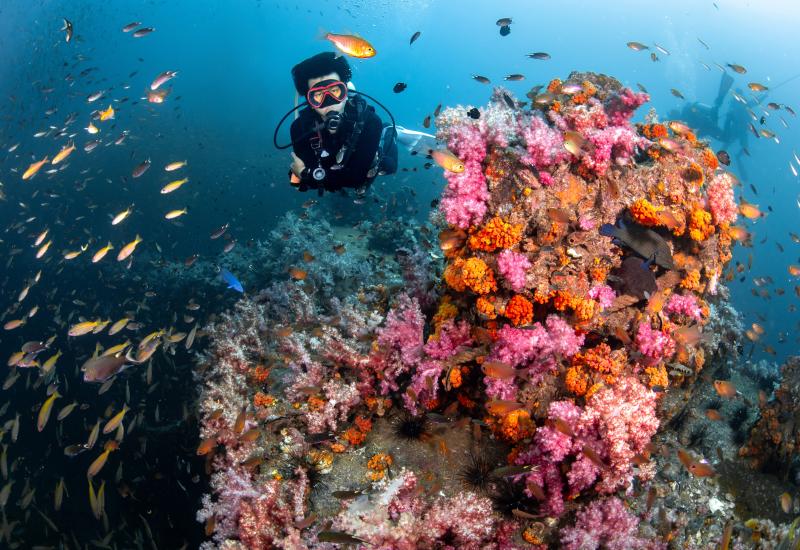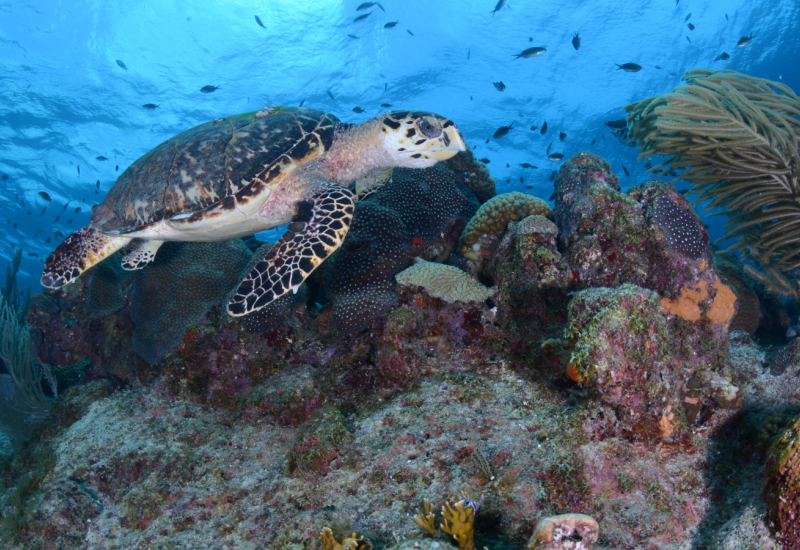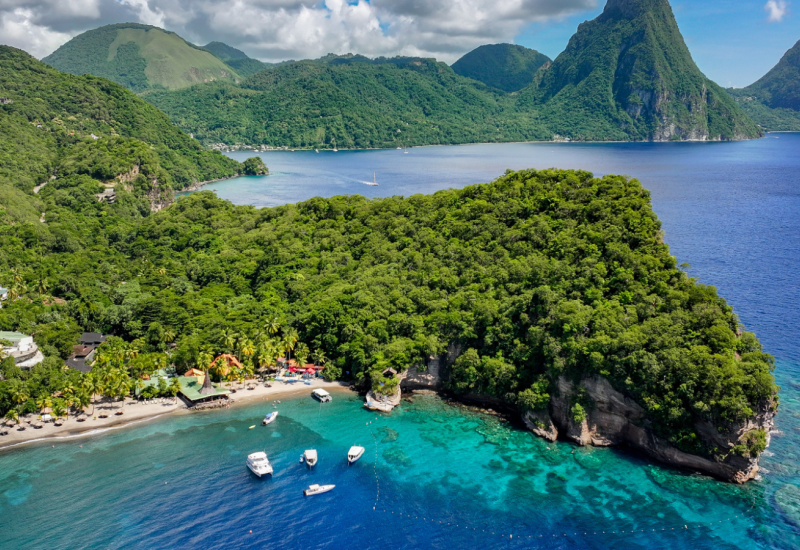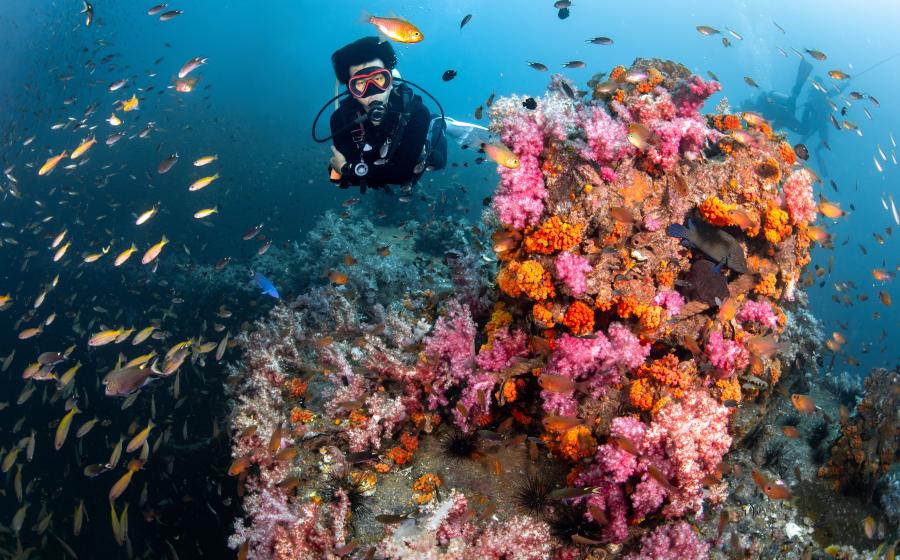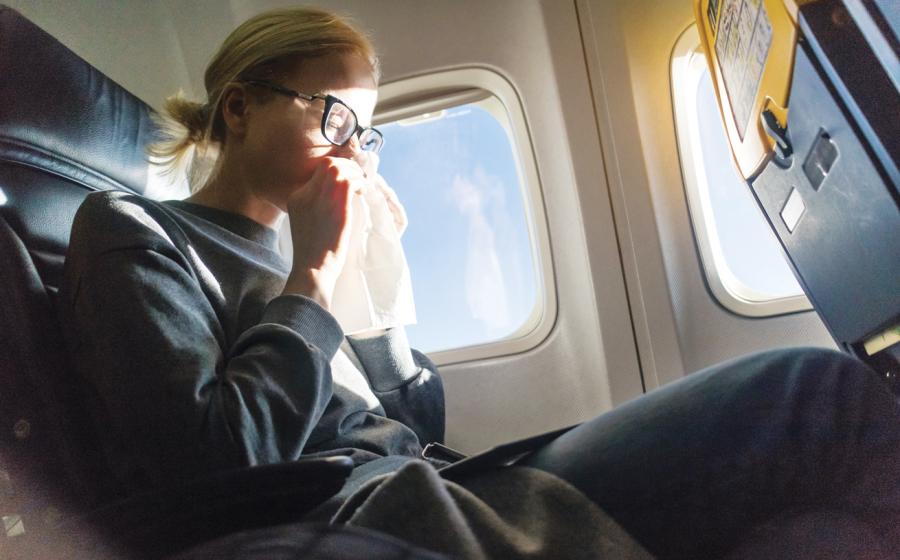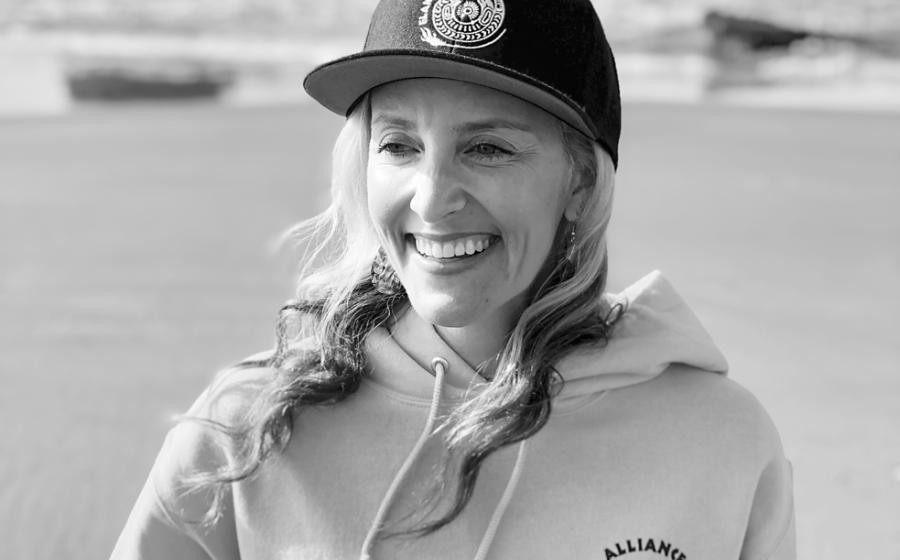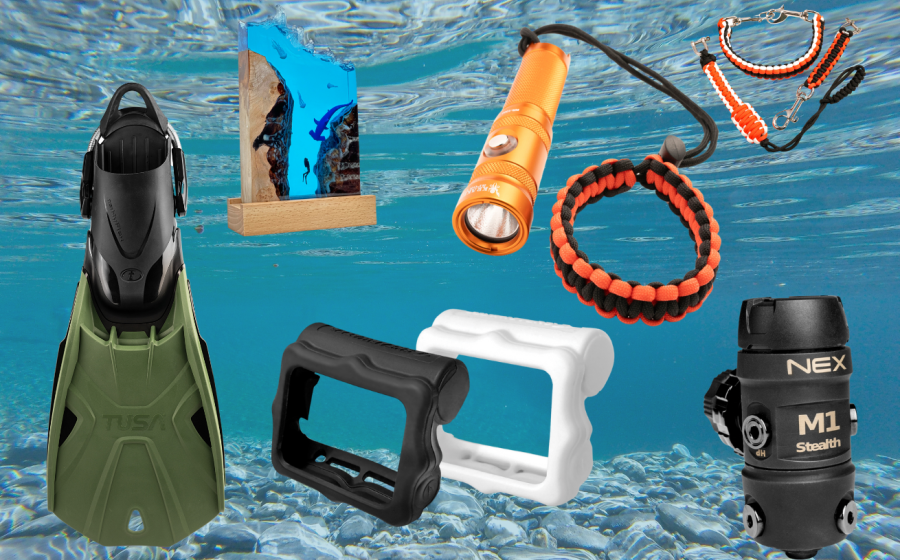Adventure Diving in Washington's San Juan Islands
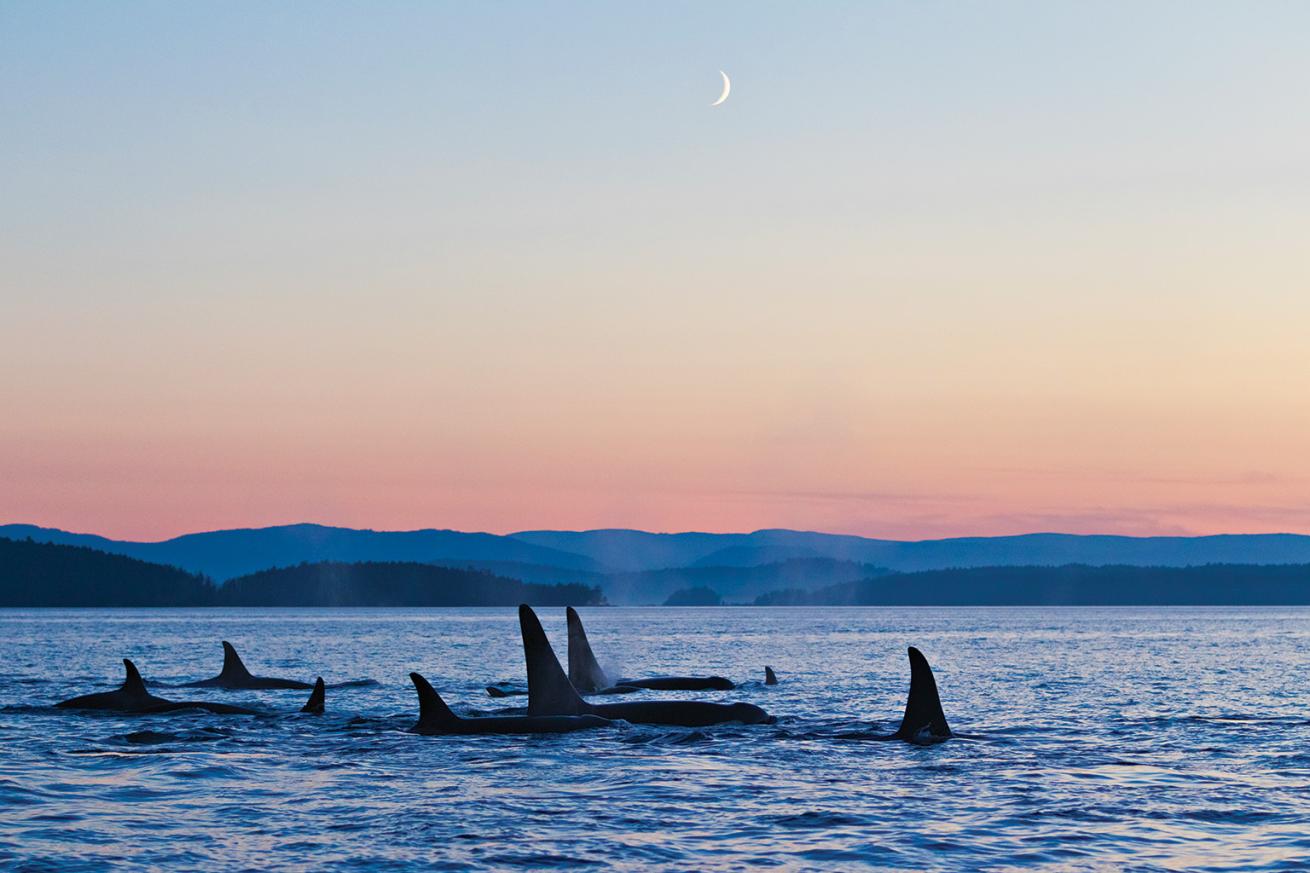
Brandon ColeA family pod of endangered, salmon-eating Southern Resident orcas at dusk. Other orcas visit the San Juans to hunt seals and sea lions.
My history with these islands in Washington’s Salish Sea goes way back to those halcyon days living rough out of my truck. My formative years—one remarkable diving-camping-whale-watching expedition flowing into the next without real life to intrude. Before I began regularly boarding jets to dive overseas thousands of miles away, I was driving onto the ferry to dive. Those short sailings over domestic waters to the San Juans have never failed to transport me far, far away.
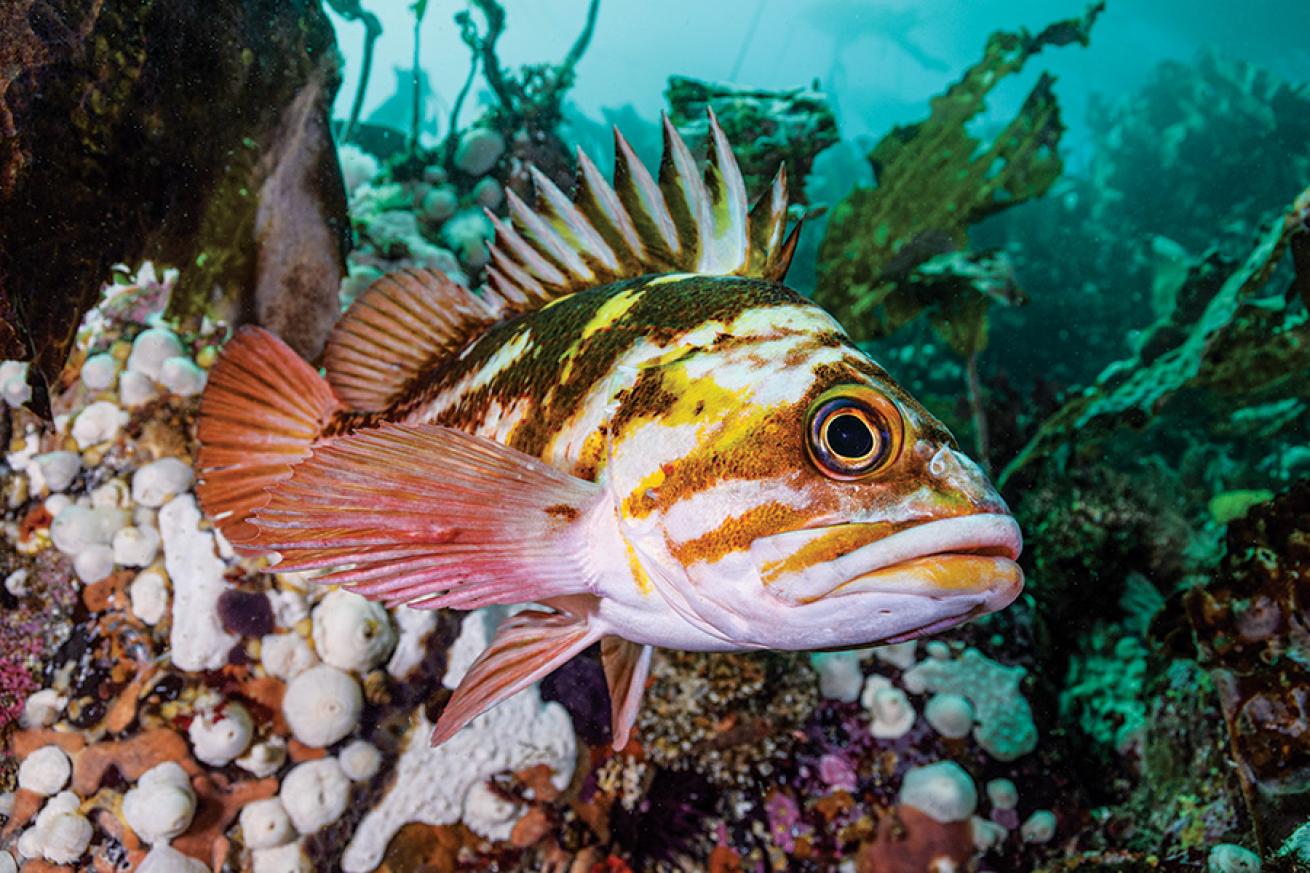
Brandon ColeA curious copper rockfish at Kellett Bluff.
At a Glance
The San Juan Islands resemble an almost complete puzzle of 172 rocks, islets and islands adrift in the blue-green Salish Sea between northwest Washington and southeastern Vancouver Island, British Columbia. The four largest islands are Orcas, San Juan, Lopez and Shaw. The archipelago’s pine-topped landmasses seen today above the waves, with their sun-burnished sea cliffs and fringing kelp beds, are actually the peaks of an ancient mountain range carved by glaciers eons ago and then submerged. Below the waves await some of the Pacific Northwest’s sweetest reefs. Lively (up to 6 knots), life-carrying currents race through the passes and sweep up the walls.
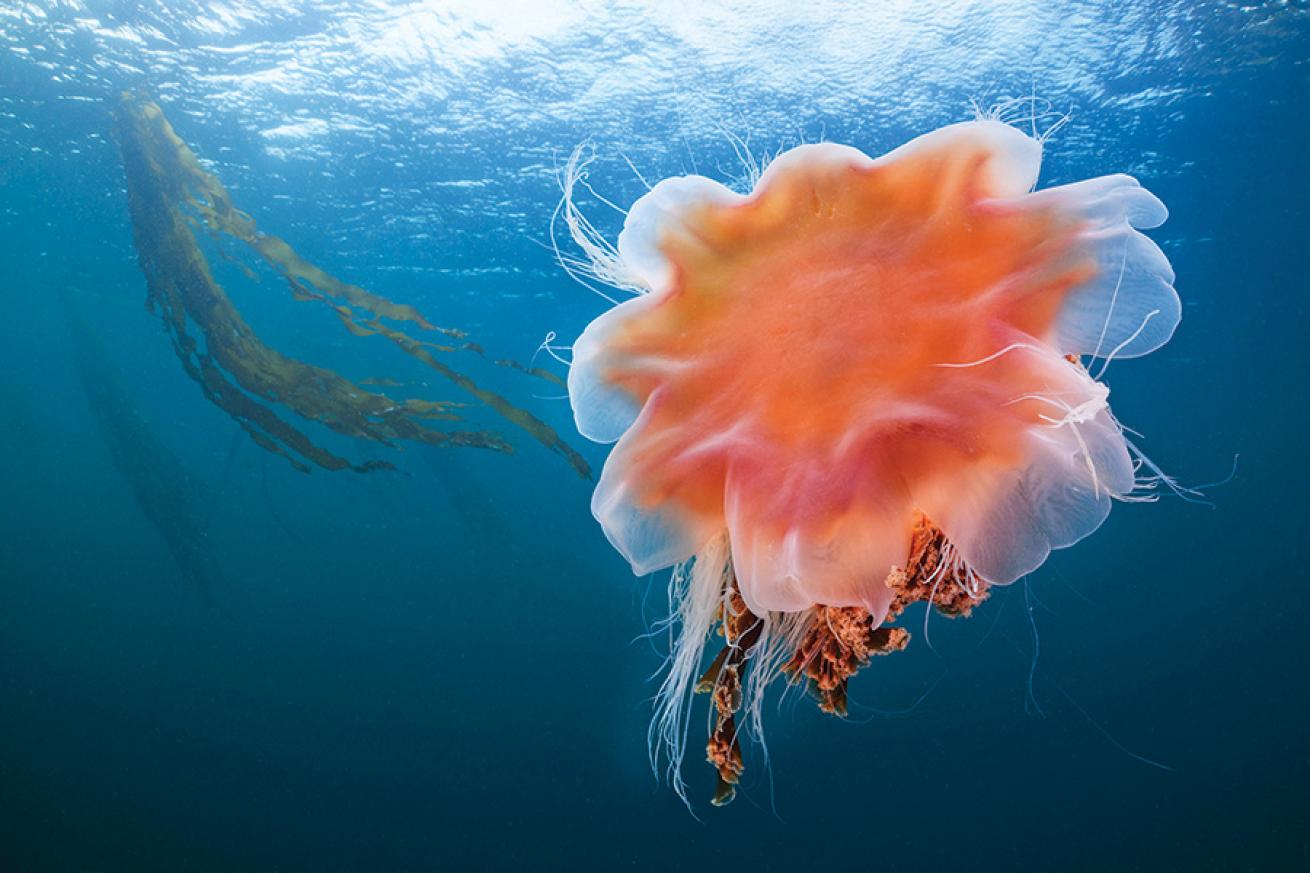
Brandon ColeA lion’s mane jellyfish at Long Island.
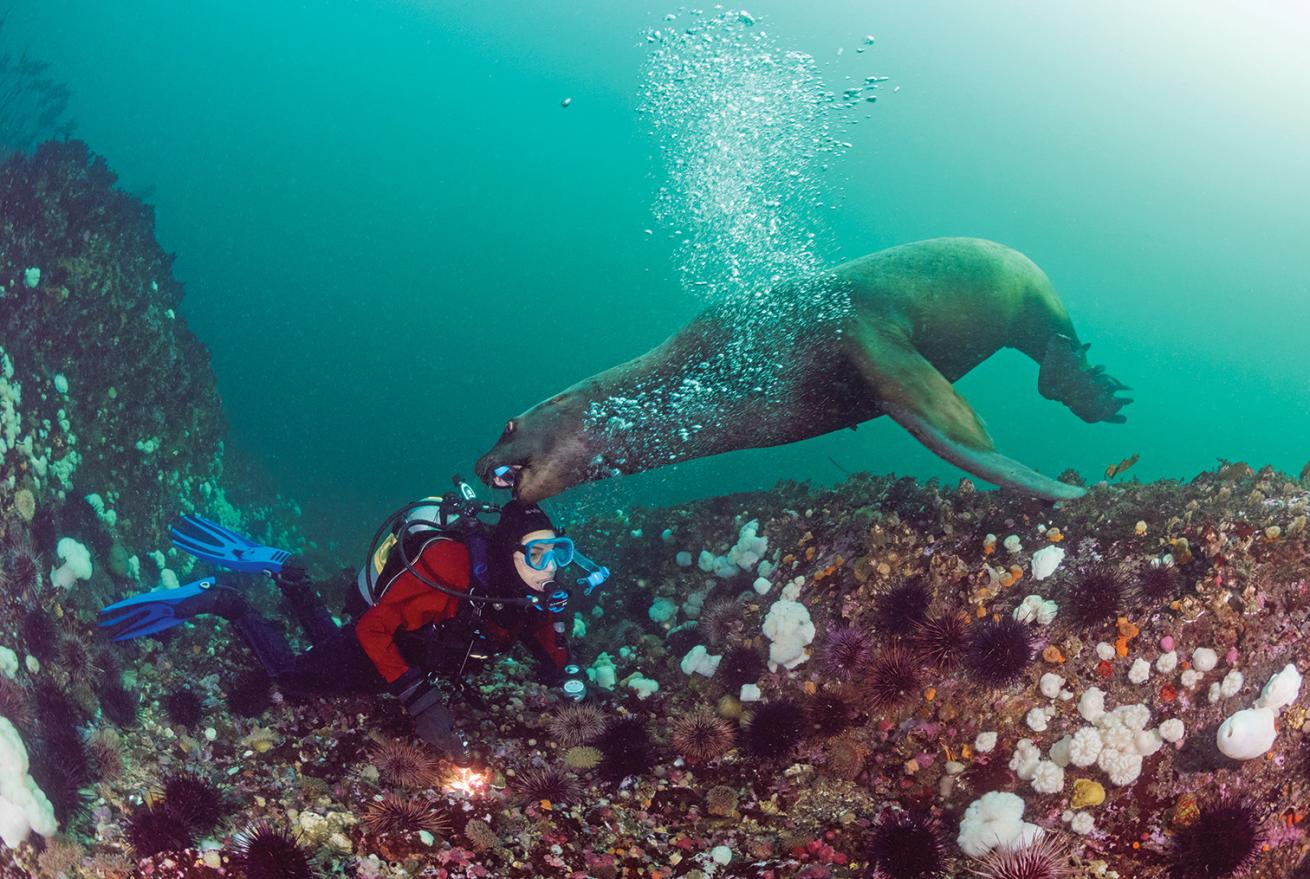
Brandon ColeA Steller sea lion plays with a diver’s snorkel at Whale Island.
Cool, nutrient-rich waters nourish hundreds of marine life species, from plants, invertebrates and fishes to seabirds and mammals. There’s an abundance of subject matter for image makers to capture with macro and wide-angle camera rigs. Novice divers can gain confidence in shallow, protected coves, while experts can stay in top form executing challenging profiles at deeper sites with dramatic terrain, where careful current planning is critical.
Related Reading: Swimming With Whale and Basking Sharks
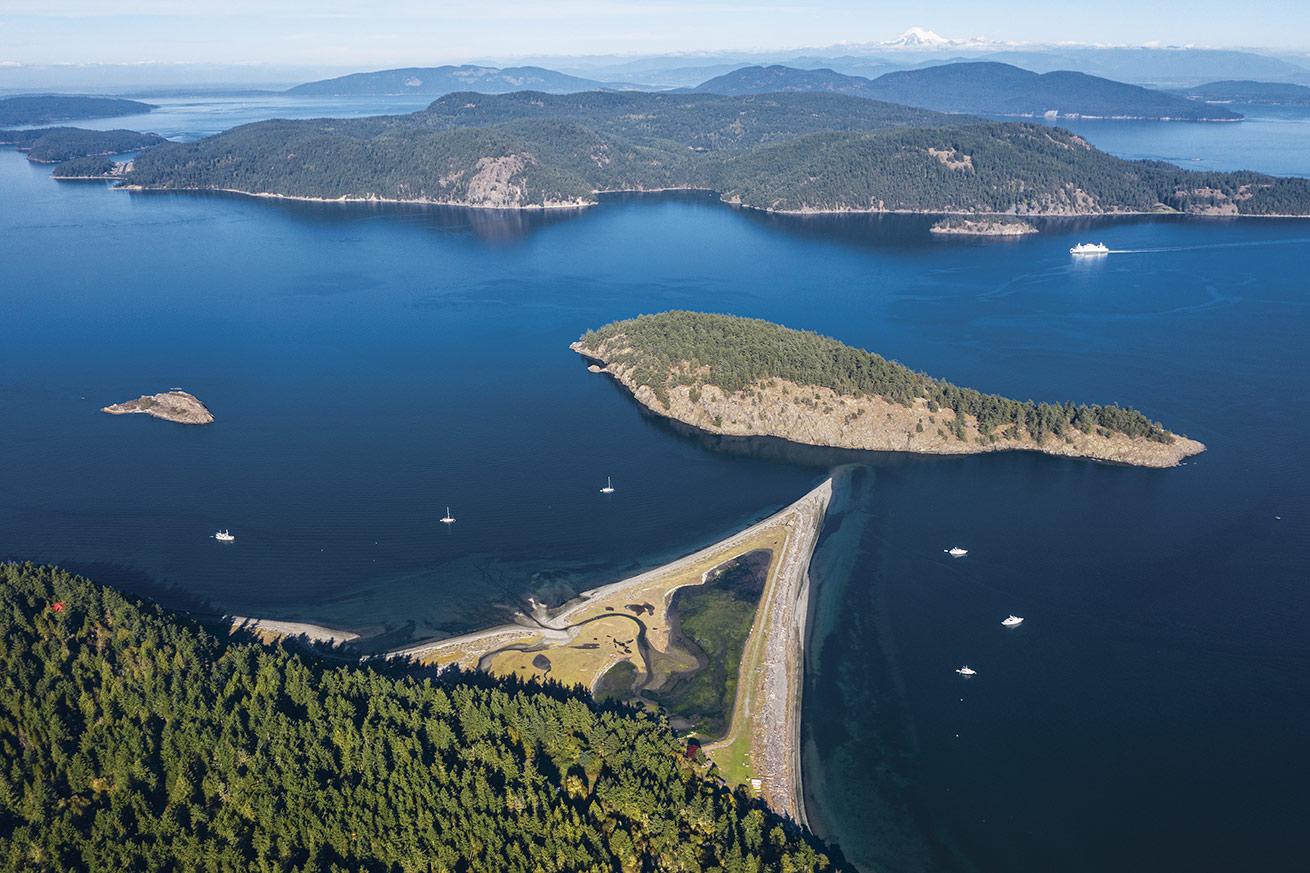
Brandon ColeA 500-yard trudge along pointy-tipped Spencer Spit on Lopez Island provides access to the critter-rich wall on adjacent Frost Island.
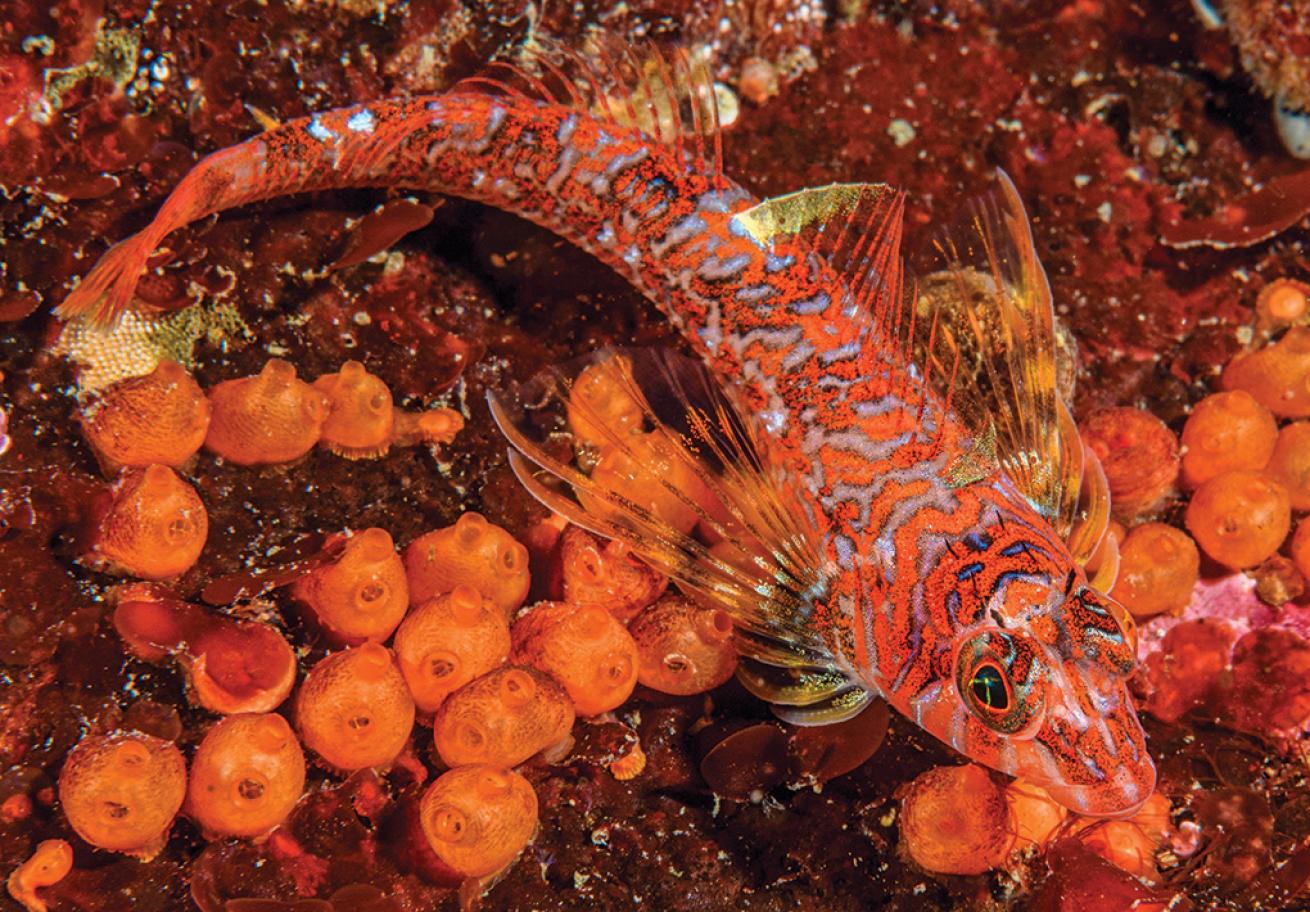
Brandon ColeFish and invertebrate life is both photogenic and prolific at Turn Island near the town of Friday Harbor. Here a finger-length longfin sculpin poses atop orange social tunicates.
An Anomaly
The San Juan Islands are in the middle of everything and everyone, sandwiched between three major cities (Seattle, Vancouver and Victoria), all of which have large and active dive communities. Yet, I know mad keen local divers who have logged hundreds of dives in Puget Sound proper but zero here. That is puzzling, and kind of a pity. The fact that one needs to take a ferry, travel by boat or fly (rather impractical on a puddle jumper with very limited baggage allowance) to reach the San Juans undeniably adds to the predive logistics in terms of the required time, expense and planning. However, I would argue that these stellar, “remote” sites make the extra effort worth it. Especially if you can stretch this into a multiday dive trip.
Related Reading: 10 Reasons to Book a Family Dive Trip to Fiji
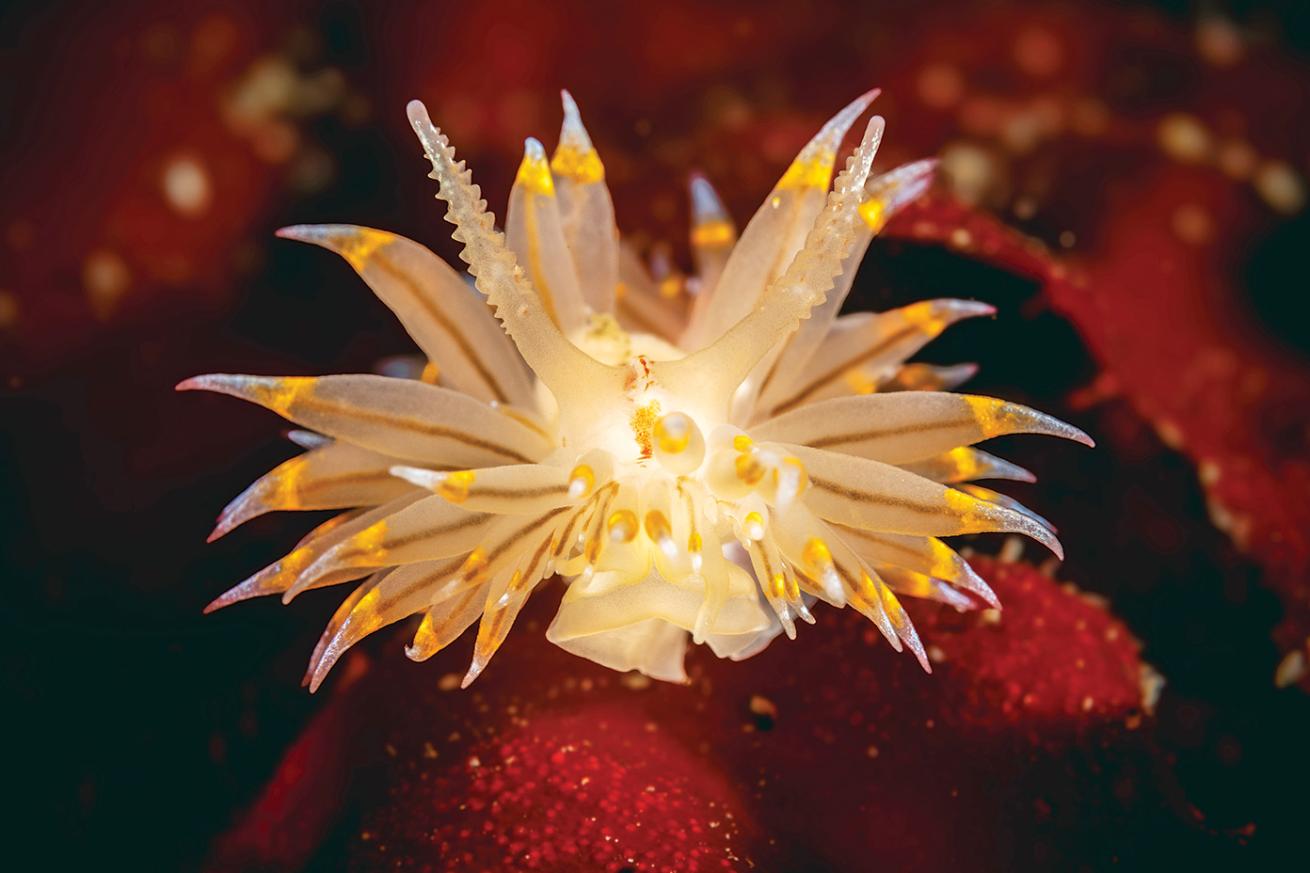
Brandon ColeA nudibranch at Ruben Tarte resembles a fireworks explosion.
Dive Site Sampler
Some personal favorite shore sites are Ruben Tarte Cove (easy entry, 15 to 50 feet deep, nudibranchs galore, flatfish, lots of crustaceans), Spencer Spit (weird, cool fish such as gunnels, grunt sculpins and poachers reward a very long walk) and Lime Kiln Point (moderate difficulty, dive during slack, ledges and walls, bull kelp, rockfish, giant octopuses, wolf eels).
A handful of faves requiring a boat include Long Island (dive on a mild flood exchange, best depth 50 to 90 feet, amazing wall of strawberry anemones, kelp bed, giant octopuses, king crabs), Bell Island (diverse marine life, nearly always divable one side or the other depending on current direction), Kellett Bluff (advanced, sheer wall with beautiful sponges, anemones and tunicates), Whale Island (advanced, dive during slack only, gullies and ledges, super colorful invertebrate coverage, sea lions). Turn Point is an excellent intermediate site, perfect for a kayak, that’s packed with life: big lingcod, cute mosshead warbonnets, rockfish, greenlings, candy-stripe shrimp, staghorn bryozoans, many starfish species and tons of swimming scallops.
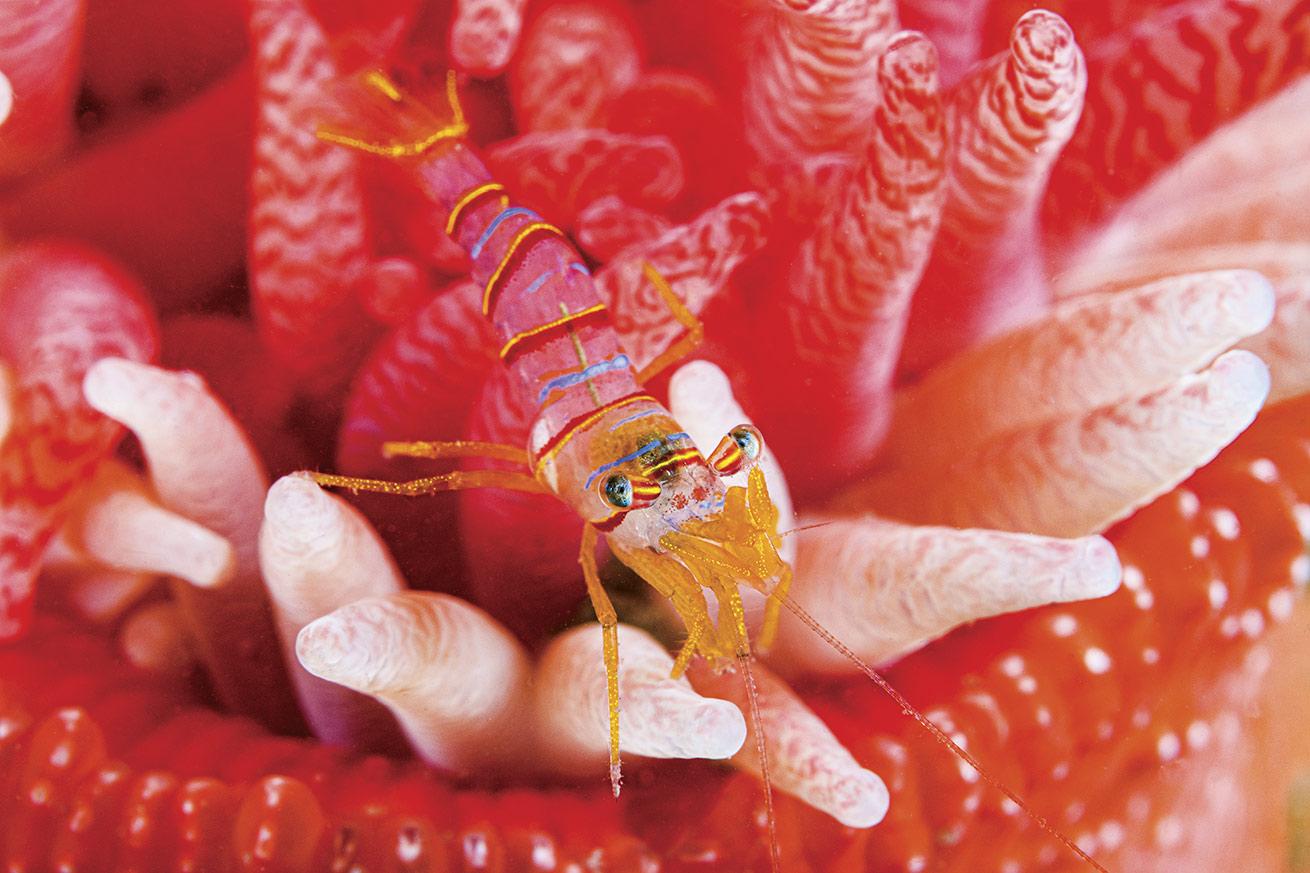
Brandon ColeA symbiotic candy-stripe shrimp atop a crimson anemone at Turn Island.
Fortune Favors the Bold
Hardcore divers with their own watercraft are an especially good match for this underwater frontier. Its undercelebrated (and often challenging) sites rival the finest in all the Pacific Northwest. Even if you’re a newbie only planning a couple of mellow dives, gumption and a DIY spirit will serve you well exploring the San Juan Islands. Like the orcas, I will return to this charming archipelago. I will revisit the past and pitch a tent to sleep under the stars for a week of camping, kayaking, unforgettable diving and—if fortune smiles upon me—unforgettable topside views of those cetacean celebrities.

Brandon ColeWhale Island’s kaleidoscopic invertebrate carpet.
Need To Know
WHEN TO GO Year-round
DIVE CONDITIONS Water temps average 48 to 53 degrees Fahrenheit, with 10 to 60 feet of visibility. Some sites experience strong current, so plan dives for slack on days with small exchanges.
TRAVEL TIPS Most people reach Washington’s San Juan Islands by driving and taking the ferry from Anacortes to Friday Harbor. Bringing your own boat or kayak opens up a world of dive possibilities. Coming across on your own personal boat is also possible. Commercial dive charters are occasionally offered—check with dive shops in Seattle, Tacoma, Everett and Anacortes. There are no dive shops in the San Juans at present, so bring enough full tanks for your stay. Double check to ensure you’ve packed all your equipment, and bring a comprehensive save-a-dive kit. It sucks to end your dive holiday early because of a leaking pressure gauge. Research dive-site specifics by networking with experienced local divers, consulting pnwdiving.com and planyourdive.com, and reading 151 Dives by Betty Pratt-Johnson and Northwest Shore Dives by Stephen Fischnaller.

